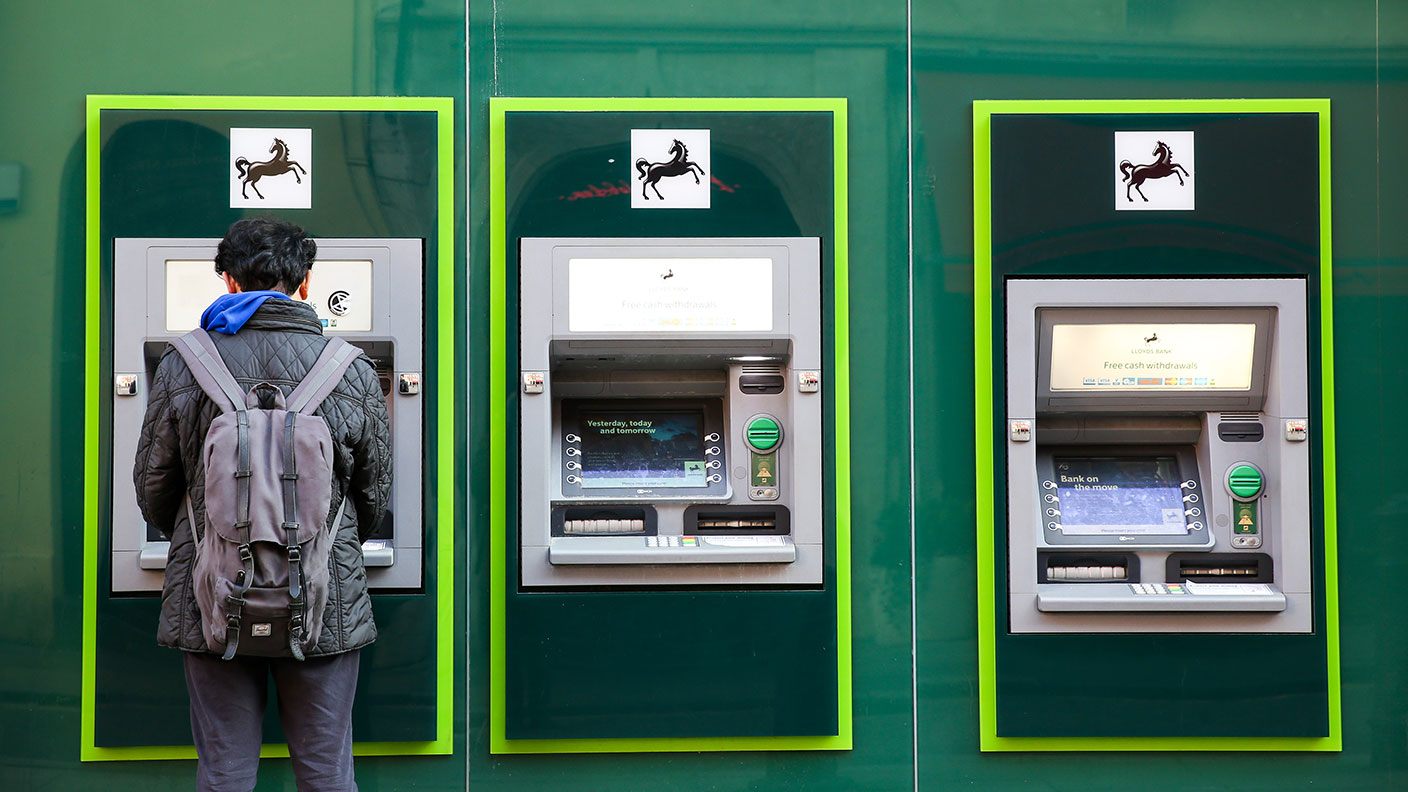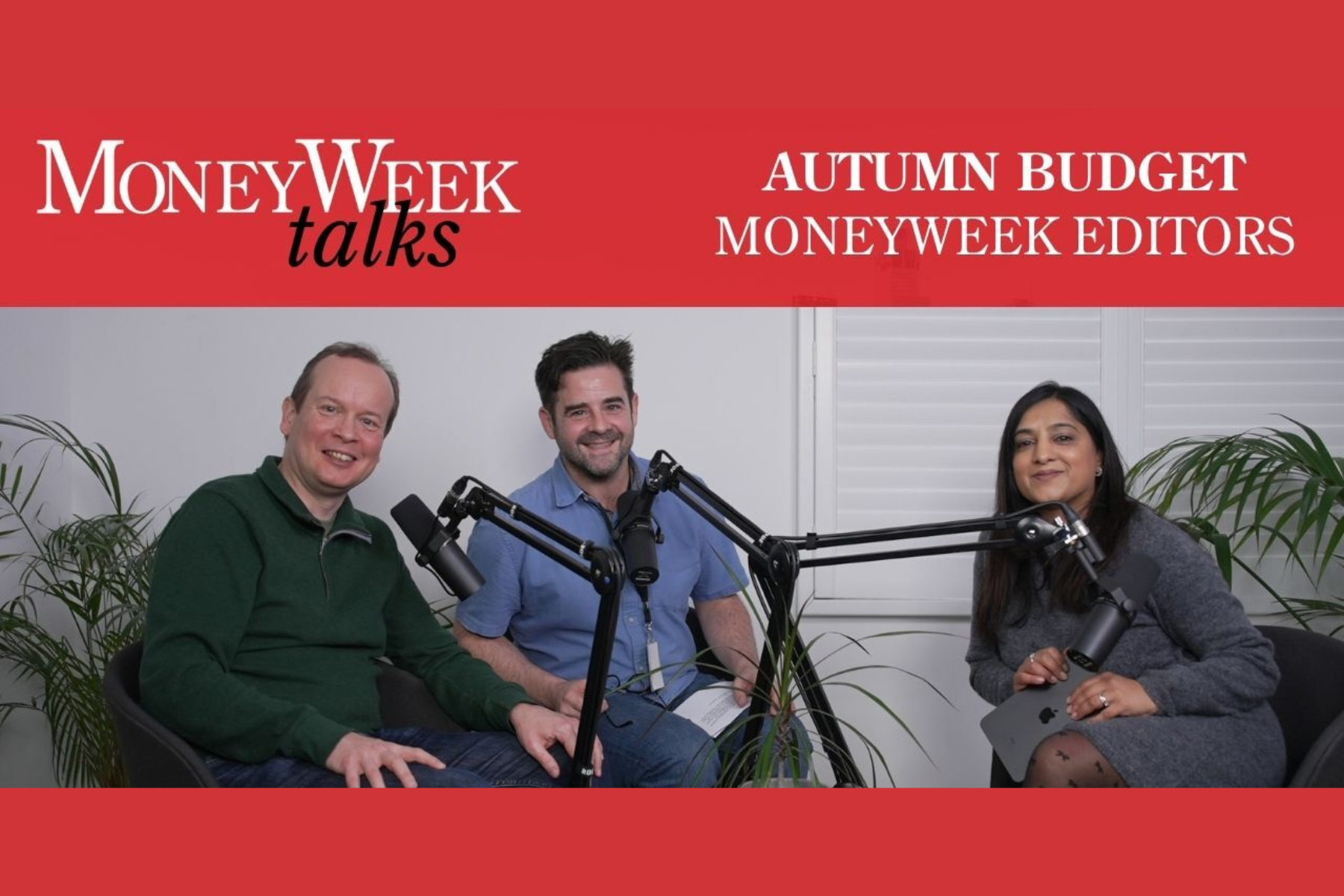UK banks have had a shocking week – so it’s probably a good time to buy
Lloyds Bank reported a £676m loss this week. And, with all of the UK's high street banks having a terrible time of things, bank stocks are detested right now. So, asks John Stepek, does that make it a good time to buy?


UK high street banks have had a shocker of a week.
We’ve seen Spain’s Santander, Lloyds Banking Group, and NatWest (the bank formerly known as Royal Bank of Scotland, and still mostly owned by the taxpayer) all line up to report losses and tell us how much worse things are going to get.
I suspect this might be a good buying opportunity. Let’s take a look at why.
MoneyWeek
Subscribe to MoneyWeek today and get your first six magazine issues absolutely FREE

Sign up to Money Morning
Don't miss the latest investment and personal finances news, market analysis, plus money-saving tips with our free twice-daily newsletter
Don't miss the latest investment and personal finances news, market analysis, plus money-saving tips with our free twice-daily newsletter
A rough week for banks
All of the banks have had a rough week. But let’s focus on Lloyds (which I own, by the way – and I’ll also note that it’s one of the positions in my portfolio which glowers at me in a baleful red every time I look at it).
The bank is among the most exposed to the UK’s prospects. Yesterday, it increased its bad loan provisions by £2.4bn. That was a lot worse than analysts had expected, and took the figure to a first half total of £3.8bn, with roughly £5bn expected by the end of the year.
It also meant that the bank reported a £676m loss, compared to analysts’ forecasts of a £31m loss. The share price fell by 8% on the day. Given that it’s already fallen by more than half in the year to date, that really is adding insult to injury.
So why am I thinking that now might be a good time to buy banks in general? It’s all about incentives. Incentives are the most powerful force in economics. I reckon incentives represent the main source of inefficiencies and unanticipated consequences in financial markets. It’s not that economists and analysts don’t understand that incentives matter, it’s just that they are almost impossible to model.
But if you try to think about incentives in the banking sector right now, you can start to see why markets might be overly pessimistic about its prospects.
Lloyds and its fellow banks have every reason to paint as bleak a picture as possible. The banks have, in effect, been ordered to lend by the government. They’ve been told not to pay out any dividends. Coronavirus has been an absolute disaster for their investors. But, most importantly – none of this is their fault.
What does a sensible person do, when a project they are in charge of is ripped to shreds by an external event which everyone (particularly their boss) recognises is beyond their control? They push the pessimistic case as far as they can.
Why? Because if and when things turn out to be better than that, they can claim all the credit. And if it all goes horribly wrong, they get to duck any blame entirely. It’s called under-promising and over-delivering, and if you get a chance to do it, it’s always a good idea to take as much advantage of it as possible. (This is what the management team at clothing retailer Next – which just produced better-than-expected results for the umpteenth time this week – is absolutely fantastic at doing, by the way.)
There’s also an opportunity to appear to be acting with integrity by being straight up about all this. That matters. The banks may no longer be public enemy number one exactly. But it’s not because anyone likes them these days – it’s just because there’s so much competition for the title. They’re still well up there in the top ten, and probably closer to the top five, being realistic about it.
So it’s pretty clear what the best route is here. Play up the doom and gloom as much as possible today. Put on your “the news is grim, but at least I’m honest” face. Take the share price hit, which doesn’t reflect on your management style anyway, so your job isn’t at risk. And then hope that in six months’ time, you can say things were better than expected.
Things can’t only get better – but they might?
Right, so we can see the logic here. The optimistic case for the banks is tied to the performance of the economy. So why might things be better than expected?
Well, because the scenarios the banks are painting are really, really grim. And given how negative they’ve been, it seems possible that even although things are bad, they might not get as bad as the banks have warned.
For example, Lloyds reckons that GDP will be down 10% for the year. Unemployment will end the year at above 7%. And house prices will – sacre bleu! – fall by 6%.
That’s just its middle-of-the-road scenario, as Cat Rutter Pooley points out in the FT’s Lombard column. If things get really bad, then unemployment could be above 12% in a year’s time.
It doesn’t take blind optimism to see that the economy might do better than that. Let’s say that it does, and that fewer loans go bad than they expect. They get to write back all the losses in the future. Their figures suddenly look a lot better, just as the economy is looking a lot better too.
As a result, the share prices would pick up, possibly quite strongly. And if a bit of inflation comes back too, so much the better.
There would, incidentally, also be a pleasing symmetry to this, were it to occur. In 2007, the banking bubble peaked. Around about the same time, tech stocks were on the floor, still suffering the decade-long fallout from the dotcom bubble bursting.
Today, it’s the tech stocks that are on top of the world, and the banking stocks that are on the floor – still suffering the decade-long fallout from the great financial crisis (or the Big Banking Bubble, as you might like to call it in this context).
So it’d be almost poetic if things were to turn around at this juncture.
Please don’t get me wrong. I’m not saying for a minute that it isn’t risky. But banks are detested – or, at best, neglected, regarded as largely “uninvestable” by many investors (including an awful lot of professional investors), and have been in the doldrums for years. That sounds like a classic contrarian play to me.
(If you are interested to read more about the power of incentives, I wrote a fair bit about it in my book, The Sceptical Investor.)
Get the latest financial news, insights and expert analysis from our award-winning MoneyWeek team, to help you understand what really matters when it comes to your finances.
John Stepek is a senior reporter at Bloomberg News and a former editor of MoneyWeek magazine. He graduated from Strathclyde University with a degree in psychology in 1996 and has always been fascinated by the gap between the way the market works in theory and the way it works in practice, and by how our deep-rooted instincts work against our best interests as investors.
He started out in journalism by writing articles about the specific business challenges facing family firms. In 2003, he took a job on the finance desk of Teletext, where he spent two years covering the markets and breaking financial news.
His work has been published in Families in Business, Shares magazine, Spear's Magazine, The Sunday Times, and The Spectator among others. He has also appeared as an expert commentator on BBC Radio 4's Today programme, BBC Radio Scotland, Newsnight, Daily Politics and Bloomberg. His first book, on contrarian investing, The Sceptical Investor, was released in March 2019. You can follow John on Twitter at @john_stepek.
-
 How much would it cost you to buy a house in Great Britain's happiest places?
How much would it cost you to buy a house in Great Britain's happiest places?Average asking prices for a property in the happiest place in Britain are below the national average
-
 How the Budget will hurt you: MoneyWeek Talks
How the Budget will hurt you: MoneyWeek TalksPodcast An Autumn budget podcast special episode, featuring MoneyWeek editors Kalpana Fitzpatrick, Andrew van Sickle and Cris Heaton.
-
 What's behind the big shift in Japanese government bonds?
What's behind the big shift in Japanese government bonds?Rising long-term Japanese government bond yields point to growing nervousness about the future – and not just inflation
-
 Halifax: House price slump continues as prices slide for the sixth consecutive month
Halifax: House price slump continues as prices slide for the sixth consecutive monthUK house prices fell again in September as buyers returned, but the slowdown was not as fast as anticipated, latest Halifax data shows. Where are house prices falling the most?
-
 Rents hit a record high - but is the opportunity for buy-to-let investors still strong?
Rents hit a record high - but is the opportunity for buy-to-let investors still strong?UK rent prices have hit a record high with the average hitting over £1,200 a month says Rightmove. Are there still opportunities in buy-to-let?
-
 Pension savers turn to gold investments
Pension savers turn to gold investmentsInvestors are racing to buy gold to protect their pensions from a stock market correction and high inflation, experts say
-
 Where to find the best returns from student accommodation
Where to find the best returns from student accommodationStudent accommodation can be a lucrative investment if you know where to look.
-
 The world’s best bargain stocks
The world’s best bargain stocksSearching for bargain stocks with Alec Cutler of the Orbis Global Balanced Fund, who tells Andrew Van Sickle which sectors are being overlooked.
-
 Revealed: the cheapest cities to own a home in Britain
Revealed: the cheapest cities to own a home in BritainNew research reveals the cheapest cities to own a home, taking account of mortgage payments, utility bills and council tax
-
 UK recession: How to protect your portfolio
UK recession: How to protect your portfolioAs the UK recession is confirmed, we look at ways to protect your wealth.
